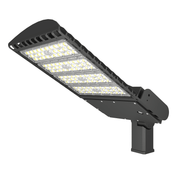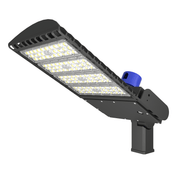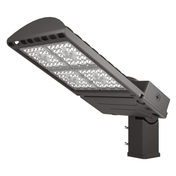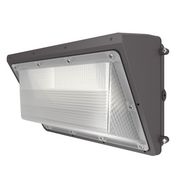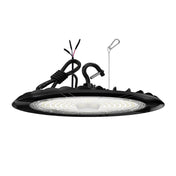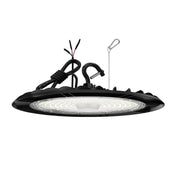With the advancement of technology and increased environmental awareness, LED lights (light-emitting diode lights) have gradually become the mainstream choice for modern lighting. Compared with traditional ordinary lamps (such as incandescent lamps and fluorescent lamps), LED lamps perform better in many aspects and have become the first choice for home, commercial, and public lighting.
LED wall lights The typical outdoor wall light is likely to be a sodium vapor lamp. The hue of sodium vapor lamps tends to be very deep yellow (or orange). Low-pressure sodium vapor lamps emit monochromatic light and tend to have poor color rendering, but it has relatively good energy efficiency for traditional bulb technology. Indoor solutions for wall lighting include traditional incandescent bulbs, but more typically mercury vapor bulbs. While each technology has its advantages, industrial LED lighting is superior to all traditional alternatives in important aspects. Let's take a look at some of the factors to consider when deciding whether LED retrofits are right for your wall lighting.
Industrial LED Wall Lights vs. Sodium Vapor Wall Lights: If you have ever walked in a parking lot or outside a building at night and noticed a deep yellow glow, the light you saw was most likely sodium vapor. Low-pressure sodium lamps emit a very deep yellow monochromatic light, while high-pressure sodium lamps emit a slightly whiter (but still usually yellow) light. Prior to advances in LEDs, these lamps were the most efficient option on the market. Metal halide lamps are commonly used for sports and warehouse/industrial purposes (and any environment that needs to illuminate a large, tall space).
Advantages of metal halide lamps include decent color rendering and relatively ample foot-candle levels compared to other types of traditional bulbs. Some of their main disadvantages are that they take a long time to warm up (sometimes 15-30 minutes) and are expensive to maintain. Their failure characteristics include flickering and wasted energy through heat.
LED High Bay Lighting vs. High-Pressure Sodium (HPS) Lamps: HPS lamps are commonly used in warehouses, industrial, commercial, and recreational facilities where high bay lighting is appropriate. Their advantages include being inexpensive, energy efficient (low operating costs), and having a relatively long lifespan. HPS lighting technology retains these advantages over most traditional bulbs, but they fall short of LED high bay lighting in all three areas. Disadvantages of HPS bulbs include the worst color rendering on the market and long warm-up times.
Industrial LED Lighting vs. Fluorescent Lighting: Although less common, fluorescent lighting is sometimes used in warehouse or industrial applications (primarily T12, T8, and T5 lamps). Advantages of fluorescent lamps include lower initial cost and relatively high efficiency (especially compared to other traditional bulbs). Disadvantages include the presence of toxic mercury (requiring certain waste disposal procedures), shortened life due to frequent switching on and off, and the need for ballasts to stabilize the light.
LED wall lights have the following significant advantages over traditional lighting solutions:
Energy saving and environmental protection: LED wall lights have high energy efficiency and can convert a higher proportion of electrical energy into light energy. Therefore, at the same brightness, LED wall lights consume less energy than traditional wall lights. In addition, LED wall lights do not contain harmful substances such as mercury, will not pollute the environment, and meet environmental protection requirements.
Long life: The life of LED wall lights far exceeds that of traditional wall lights. The life of ordinary incandescent lamps is generally around 1,000 hours, the life of fluorescent lamps is around 8,000 hours, and the life of LED wall lights can reach 25,000-50,000 hours, or even longer. This means that using LED wall lights can reduce the frequency of lamp replacement and reduce maintenance costs.
Soft light: The light of LED wall lights is soft and will not produce a dazzling feeling. It is suitable for long-term use and reduces visual fatigue. Traditional wall lights mostly use incandescent lamps or fluorescent lamps, and the light is more dazzling.
Diversified design: The design of LED wall lamps is more flexible and diversified. They can be laid out and combined according to the needs of designers to create various unique lamp forms. In addition, the appearance design of LED wall lamps is also more fashionable and beautiful, which can match the interior decoration style and enhance the overall aesthetics.
High color rendering and instant on: The color rendering index (CRI) of LED wall lamps is usually high, which can restore the color of objects more realistically. In addition, LED lamps have the characteristics of instant on and off and do not require preheating time, which is suitable for places with frequent switching.
Intelligent: Modern LED lamps are often combined with intelligent control systems. Users can adjust the brightness, and color and switch the status of the lights in real-time through mobile phone applications or smart devices to create an ideal environment atmosphere.



